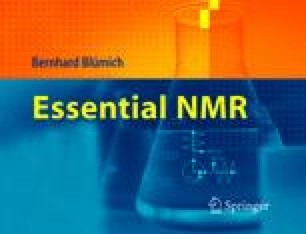

- Arvin moser magnetic resonance in chemistry software#
- Arvin moser magnetic resonance in chemistry series#
Gary is continuing research in NMR Spectroscopy and now holds a ppositions as an Adjunct Professor of Chemistry at Seton. In addition, the sepiolite-indigo spectrum has two narrow, shifted peaks corresponding to the carbonyl group and the C-7 (C-16) of indigo. Gary E Martin is retired from the Structure Elucidation Group at Merck.
Arvin moser magnetic resonance in chemistry series#
In contrast to the broad peaks of the pure indigo 13C CP/MAS-NMR spectrum, the sepiolite-indigo adduct spectrum consists of a well-defined series of six narrow peaks in the 120.0–125.0 ppm range. Crushing indigo and sepiolite together initiates a complexation, clearly seen in the 13C CP/MAS-NMR spectrum, which can be driven to completion by heat application. The 29Si CP/MAS-NMR spectrum of the heated sepiolite-indigo adduct is very reminiscent of the spectrum of dehydrated sepiolite. Major Structural Components in Freshwater Dissolved Organic Matter. Andrew Baer, Mehran Alaee, Brent Lefebvre, Arvin Moser, Antony Williams and André J. The TGA-DTG curves of the sepiolite-indigo and palygorskite-indigo adducts were similar to their pure clay mineral counterparts except for an additional weight loss at ~360☌ due to indigo. Diffusion-Ordered Nuclear Magnetic Resonance Spectroscopy (DOSY-NMR): A Novel Tool for Identification of Phosphorus Compounds in Soil Extracts.

Micropore measurements showed a loss of microporosity in both sepiolite and palygorskite after reaction with indigo.
Arvin moser magnetic resonance in chemistry software#
79 The CASE software is used to generate and then filter through numerous permutations of structures that are. Textural analysis revealed that no apparent changes in microporosity occurred in sepiolite or palygorskite after thermal treatment at 120☌ (sepiolite) and 150☌ (palygorskite) for 20 h. Computer-assisted structure elucidation (CASE) is a technological development made in recent years to overcome obstacles in data interpretation such as that described above, and has further been utilized to revise some published structures associated with misinterpreted data sets. The samples were tested chemically to ensure that they displayed the characteristic properties of Maya Blue. Palygorskite-indigo and sepiolite-indigo adducts (2 wt.% indigo) were prepared by crushing the two compounds together in a mortar and heating the resulting mixtures at 150 and 120☌, respectively, for 20 h.


 0 kommentar(er)
0 kommentar(er)
